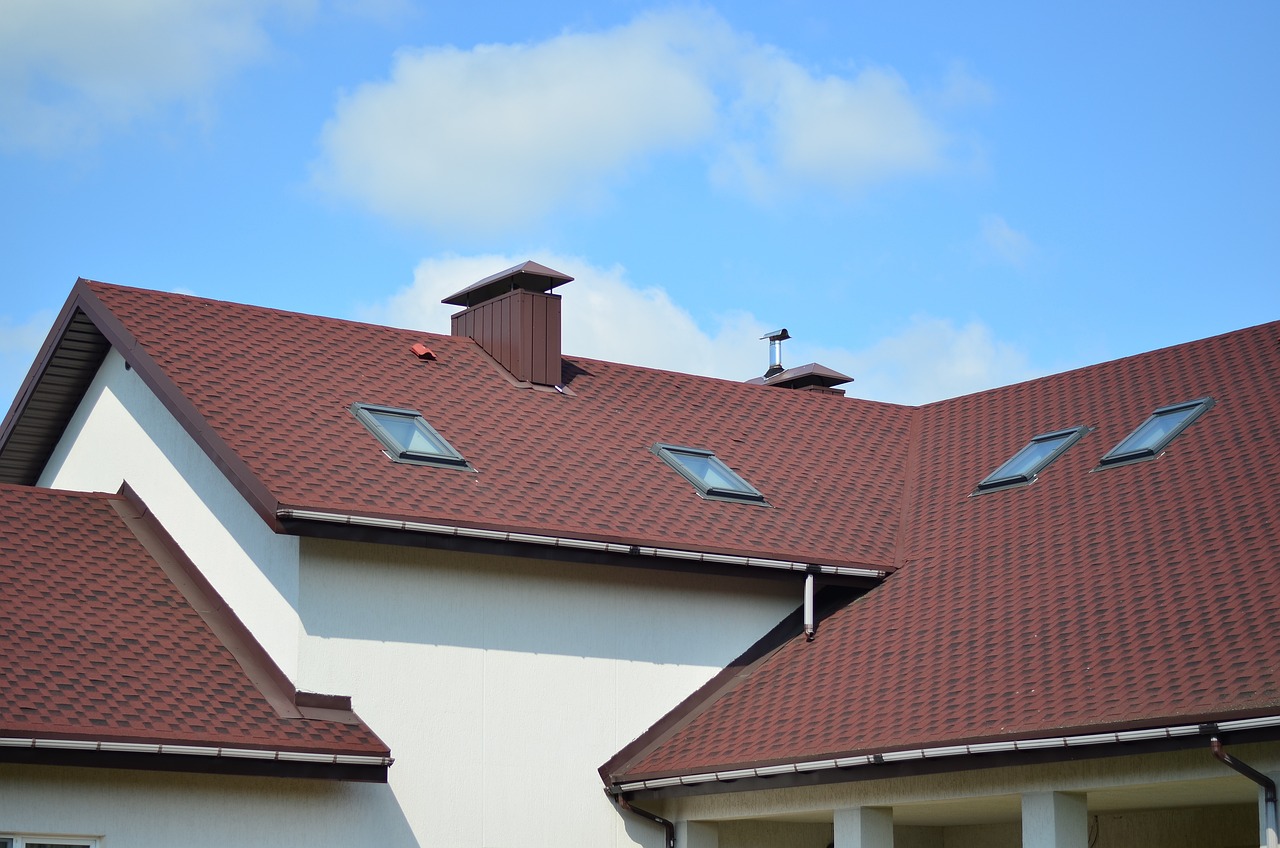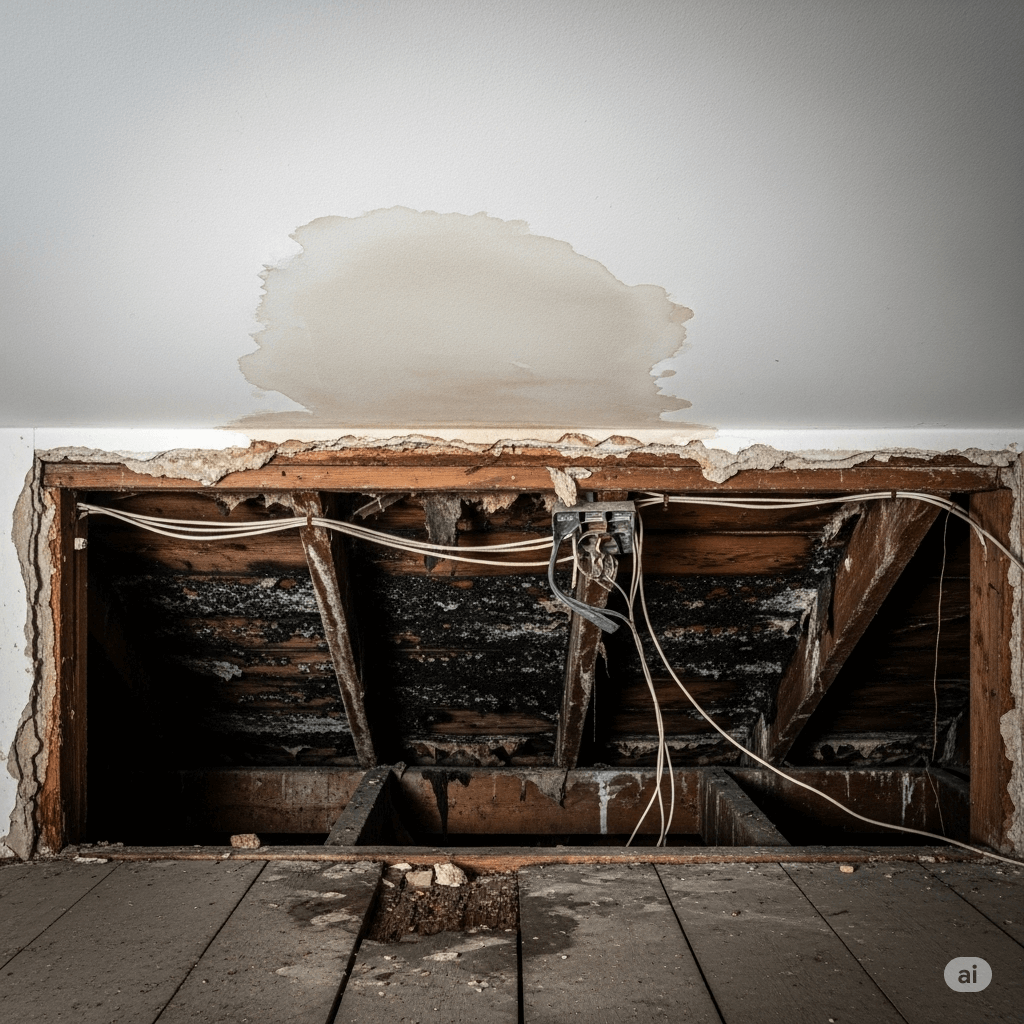Why That Tiny Roof Leak Could Destroy Your Entire Home
You notice a small water stain on the ceiling. Just a light yellow ring. Nothing major, right? Maybe it's from an old storm or a bit of condensation. You tell yourself you'll keep an eye on it. And then... you forget.
That tiny stain, though? It's your roof waving a red flag. What seems harmless can quickly spiral into damage that costs you thousands—and turns your home into a damp, moldy mess.
Let's walk through what actually happens when a minor roof leak is ignored, why it's far more serious than it looks, and what you can do to stay ahead of it.

Water Doesn't Sit Still
Here's something people don't always realize: once water gets into your home, it moves. It doesn't just stay where the leak began.
A single drip can spread through your insulation, sneak behind walls, run down rafters, or collect near wiring. And because your roof is layered with underlayment, decking, insulation, and ceiling materials, it could be weeks—or even months—before you notice the visible signs.
By then, the damage has already been done.
The Real Cost of "Just a Small Leak"
Let's break it down.
Rotting Wood and Weakening Structure
Most homes are framed with wood, and wood doesn't stand a chance against long-term moisture. Even slow leaks can cause it to rot, sag, or collapse. If it reaches beams or ceiling joists, you're no longer looking at a cosmetic fix—you're looking at structural repair.
Mold Growth and Health Hazards
Mold starts growing in as little as 24-48 hours in damp spaces. It often spreads inside your walls or attic before you ever smell it. Not only is it hard to get rid of, but it's also a real health risk—especially for kids, the elderly, or anyone with allergies or asthma.
Electrical Dangers
When water reaches wiring, you're not just risking damage—you're creating a fire hazard. Drips into light fixtures, ceiling fans, or junction boxes can trigger short circuits or cause serious safety issues.
Energy Loss and Soaked Insulation
Once insulation gets wet, it compresses and stops doing its job. That means your house is harder to heat and cool, and your utility bills start creeping up. It may even need to be completely replaced.
Don't Let This Be Your "Could've Fixed It" Moment
It's easy to put off repairs when things don't look urgent. But the difference in cost between fixing a small leak now and repairing widespread water damage later can be massive.
Need proof? Mold remediation alone can cost anywhere from $2,000 to $6,000. Structural repair and new drywall? Add thousands more.
And here's the kicker—many home insurance policies won't cover water damage if it's caused by lack of maintenance. That little delay could end up costing you out-of-pocket.
It's Not Always the Obvious Culprit
When people think of leaks, they usually blame missing shingles or storm damage. And yes, those can definitely cause trouble—but some of the worst leaks come from areas you rarely think about.
For example, metal roof flashing—the thin material that seals off areas around chimneys, skylights, roof valleys, or vents—can corrode or shift over time. Once it loosens, water can sneak right underneath.
That's why roof flashing repair is one of the most important (and most overlooked) fixes a homeowner can make.
It's not flashy (pun intended), but it plays a huge role in keeping water out of the most vulnerable parts of your roof system.
Watch for These Red Flags
So how do you know if you have a leak—especially a sneaky one?
Here are some signs to look for:
- Discolored patches or stains on ceilings or walls
- Peeling paint or soft spots
- Musty, damp odors—especially after rain
- Mold around vents or in the attic
- Dripping or water noise in walls
- Algae or moss growing on your roof
- Sudden spikes in your heating/cooling bills
Even one of these is enough to warrant a closer look.

What To Do if You Suspect a Leak
Don't panic—but don't wait.
- Limit the spread. If water is dripping, place containers under the leak and move furniture out of harm's way.
- Call a roofing pro. The sooner you get an expert to take a look, the better your chances of stopping the damage early.
- Document everything. Snap photos of the water damage and any visible leaks. If insurance gets involved, you'll need records.
- Avoid patching it yourself. Quick fixes might cover up the symptoms but leave the underlying issue unresolved.
Keep Your Roof Healthy Long-Term
Here's the good news: you don't have to wait for a disaster to happen. Most leaks are entirely preventable with some simple habits:
- Get annual roof inspections. Catch wear and tear early.
- Keep gutters clean. Clogged gutters cause water to back up under the roof.
- Trim tree branches. Falling limbs can damage shingles or flashing.
- After every big storm, do a visual check. Look for lifted shingles, missing granules, or exposed flashing.
And if you do spot a problem? Handle it quickly. Small fixes now are a whole lot cheaper than major renovations later.
Don't Let It Grow Into a Nightmare
We get it—roof leaks aren't exactly exciting. They're easy to ignore, especially when they don't seem urgent. But water is sneaky. And once it's inside, it gets into places you can't see or reach—causing damage that builds up quietly until it's suddenly a huge deal.
That one drip could be the start of a collapsed ceiling, a moldy attic, or a fire risk you didn't know you had.
So if you've been noticing suspicious stains, that musty smell, or your energy bill creeping up—don't brush it off.
Have someone take a look. Handle the leak before it handles you.
Published 7/7/25